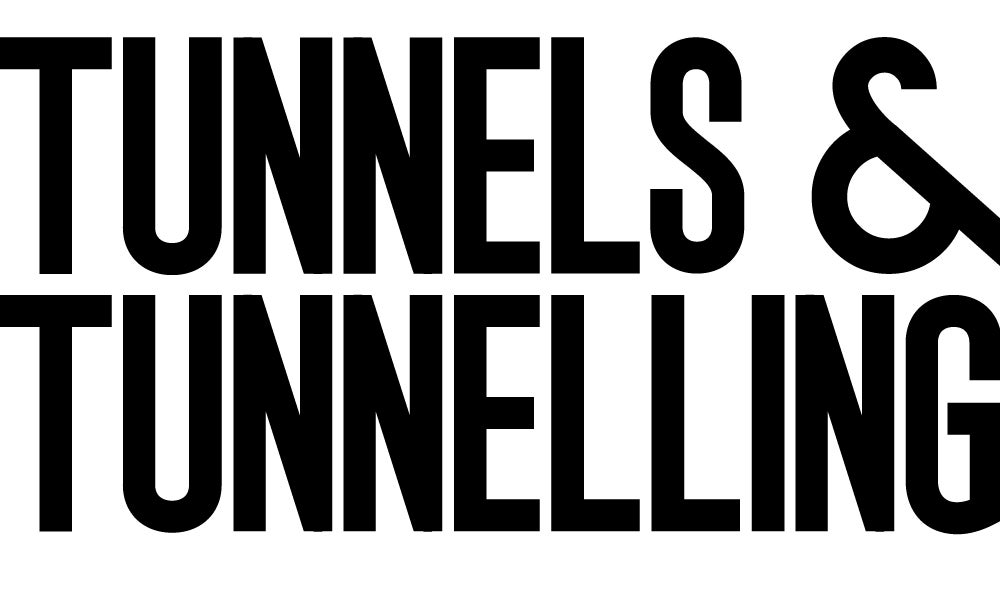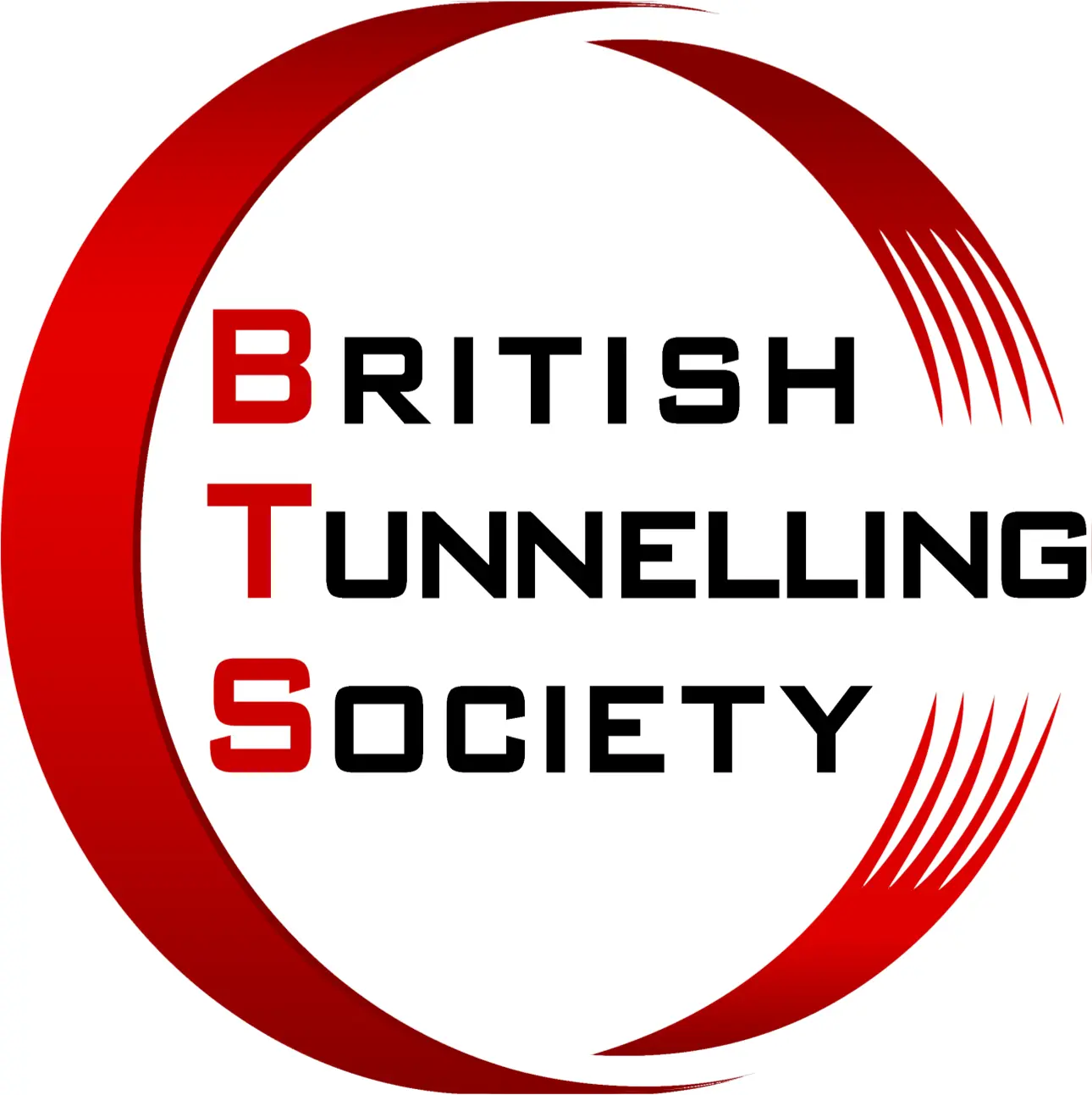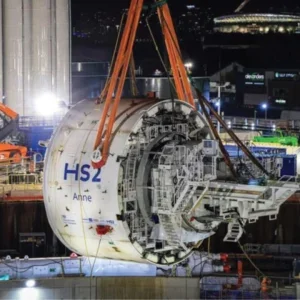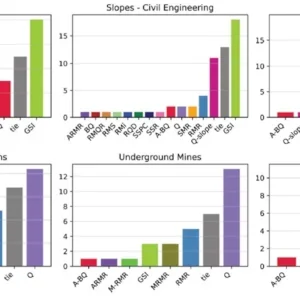The Rijnlandroute comprises among others the new link N434 between the existing A4 and A44 highways in the western region of the Netherlands, near the city of Leiden. This new link was planned in a rather rural area just south of the actual city centre of Leiden. As the inhabitants of the communities of Voorschoten and Leiden were strongly opposed to another highway, the project could only move forward once all stakeholders and technical considerations had been addressed, which meant a solution comprising a bored tunnel and a long open cut was proposed.
Segmental Lining
Segment Geometry
The internal diameter of the bored tunnel is 9.79m while the lining has a thickness of 400mm. Universal rings with an average width of 2,006mm and a tapering of 34mm were adopted. This rather strange average width results from a contractual requirement that the distance in between two consecutive cross passages can never exceed 250m. A sensitivity analysis of possible ring joint thicknesses (due to compressed interstitial material) in combination with the 3D alignment of both tubes, and the contractor’s preference to always have the breakingout point at the heart of the segment led to this value of segment width. Each ring consists of seven segments, each covering approximately 51.4° of the ring.
The segments are ‘cut’ under an angle of 8° except from the last segment (A7) and the contact surfaces of the neighbouring segments (A1 and A6) – the so-called counter keys – having a cut angle of 12°. Further on, the first and last installed segment of the ring have a trapezium shaped form while all other segments are parallelograms.
Damage free lining
The joint venture, Comol5, investigated track records regarding damage to the segmental linings that were observed during the construction of existing bored tunnels in the delta region of the Netherlands. The main causes of damage were inaccurate handling and the introduction of unallowable peak stresses when applying the push rams. These peak stresses were often generated due to an unevenness in the ring joints. This unevenness is frequently related to the small shear keys.
As these shear key segments are installed at the end of the ring installation process, it is sometimes hard to push the wedge-shaped segment into the ring to its full extent. Further more, the small shear key has only one push ram acting on its perimeter. This means that when the adjacent segment of the next ring is being installed, the shear key is temporarily not held in position by any push ram or by a partly overlapping segment, and thus can be pushed out of its ring. By implementing the large key segment, with its increased cut angles, easy installation of the key segment is assured. The equally large segments on the other hand ensure that one push ram fixes one segment at all times during the installation process and thus prevents unallowable movements of the key segment. The damage due to high local peak stresses is countered by an increased splitting reinforcement.
Structural design standard lining type
To define the rebar configuration of the standard type segmental lining, six normative cross sections were investigated. These cross sections were chosen on the basis of soil cover and geotechnical layering as can be seen in figure 4.
The finite element software DIANA FEA is used. A 3D continuum model comprising six consecutive rings is adopted. The internal lining forces are derived from the middle two rings. The resulting Ultimate Limit State (ULS) sectional forces are shown in figure 5. The reinforcement quantities can be kept close to the minimum reinforcement ratio on basis of a cover of 70mm.
Structural design special lining types
In the standard lining type four thermoplastic dowels type SOF-FIX Anix 110 per segment are foreseen. At the locations of the cross passages and the junctions of the main tunnels with the shafts, the shear forces in between consecutive rings is much higher than the capacity of these dowels. At the locations of the cross passages one ring is cut when realising the door opening. The existing hoop forces in the cut lining tend to ‘close’. This tendency is partly mitigated by shear connectors, the so called bicones, installed in the ring joint. Per segment, four bicones of type SOF shear 375 are installed. Depending on their relative stiffness compared to the strutting installed at the opening, the bicones closest to the opening are capable of transferring approximately 25 to 35 per cent (per side) of the total hoop force to the adjacent rings.
At the junction of the tunnel with the shafts large shear forces and bending moments are introduced in the tunnel lining due to the sharp difference in support stiffness of the piled shaft and the existing soil mass. At these locations installing ‘plain’ bicones would solve the shear transfer but wouldn’t prevent the ring joints to open due to the overall bending of the tunnel tube. Therefore, several consecutive rings are joined by longitudinal fixation. In order to avoid a third type of segment moulds (besides the moulds comprising dowels and those comprising bicones), the longitudinal fixation is implemented using hollow bicones as anchor plates for threaded steel bars of type M27. Well-defined tolerances of the threaded lengths of the bars and the bicones enable the use of a limited set of different bar lengths compatible with tapered uniform tunnel rings instead of the theoretical 28 different lengths. A colour code applied on segments and bars facilitates execution on site.
Cross Passages
Contrary to the cross passages in previous bored tunnel projects, the clearance profile of the cross passages of the RijnlandRoute tunnel are not merely defined by the necessary space for pedestrians passing by. Case histories show that people fleeing from an unsafe tunnel tube towards the safe tunnel tube can be hit by cars because the traffic in the safe tube wasn’t interrupted yet. Therefore it was decided to create enough buffer capacity within the cross passages to temporarily ‘store’ fleeing people until the safe tube is really safe. The required surface for this storage capacity depends on traffic density in the tunnel and the cross passage separation distance. This concept led to wider cross passages than usual being adopted.
The cross passages are constructed within frozen soil masses using brine freezing technology. Normally, on top of the bicones in the ring joints, the hoop forces have to be countered by a temporary strutting frame before the ring is opened. Once the cross passage is finalised, a concrete collar is realized at the inside of each main tunnel comprising the safety doors. Comol5 chose to build this concrete collar before making the breakthrough in the main tunnel lining. The collar, in combination with the bicones, can cope with the hoop forces.
Break-In and Break-Out Procedures
Break-In Using Permanent Bell Structures
Several concepts do exist to ensure a sound water tightness when breaking into the soil mass at the start of the tunnel drive, at least when tunnelling below the existing ground water level. The principle always comes down to having a sufficient length of tail void grouted before entering into the surrounding soil mass. A temporary dewatered cofferdam nor a starting plug of low strength mortar was adopted because of the absence of an existing water tight soil layer below the tunnel invert level, and also the need for very expensive retaining walls due to the extremely soft upper soil layers.
Therefore a bell solution was adopted. In this concept, a circular steel structure is installed inside the launch shaft. Afterwards the TBM is slid into the bell and starts installing the first (dummy) rings. Before the TBM passes the front retaining wall of the shaft, one or two dummy rings are already fixed by tail void grouting inside the bell and thus ensuring the required water tightness. Once the TBM has advanced sufficiently far into the soil, the steel bell can be dis- and then re-assembled for the second tunnel drive. The dummy rings are removed as well. The steel bell construction needs to be robust to cope with the applied tail void injection pressures. Usually it is made out of a series of manageable heavy components.
The separation between the tunnels of merely 0.25D (D = tunnel outside diameter) and the presence of an intermediate concrete slab only a few decimeters above the tunnel crown turned the assembly of the temporary bell structure into a costly challenge. That’s why Comol5 chose to fill up the entire space in between launching shaft bottom slab and the intermediate concrete slab by an unreinforced concrete mass.
Break-out
The break-out will be done in a receiving shaft that has been filled with water to such a level that the existing groundwater head will be balanced during break through. A sand-cement volume will be installed prior to the inundation of the shaft. This volume will be slightly higher than the outside perimeter of the lower half of the TBM, including tolerances. This way the TBM can excavate its own cradle with a minimum of effort and wear.
Face Stability
During the tender stage it became clear that by dimensioning the temporary embankment on the basis of the commonly adopted calculation methods of Jancsecz-Steiner (JS) or DIN 4085/4126 (DIN) in combination with safety factors according the German ZTV directive would lead to an embankment length reaching beyond the Rijn-Schie Canal. This meant that the Canal had to be partially backfilled.
Comol5 found out that by adopting the DIN calculation methodology in combination with safety factors according to the Eurocode directive for load scenarios HYD/UPL (hydraulic/uplift) to define the minimum required face pressure would result in an executional pressure margin above 20kPa at the location of the canal without any backfill. This operational pressure margin between the minimum required and the maximum allowable face pressure ensures a safe and feasible passage. Adopting these EC partial safety factors instead of the conservative ZTV partial safety factors will only lead to slightly higher deformations of the surface level, which isn’t that important for the canal area. However, this calculation methodology was never used before in Dutch bored tunnel projects. Therefore, Comol5 proposed to adopt the observational method and start the tunnel drive with a conservative embankment height determined with the DIN-ZTV theory, but to gradually reduce the height until the height according to the DIN-EC theory was reached. Therefore, the embankment height is defined for both methods, DIN-EC and DIN-ZTV. After a safe break-in procedure and mining the first metres under an embankment height according DIN-ZTV, the embankment is gradually lowered in three to four steps until the soil cover according DIN-EC is reached, still having the ‘traditional’ 20kPa execution margin. After the last step, the soil cover on top of the downwards sloped tunnel is exactly the same as the one present at the Rijn-Schie Canal passage. In case this reduction was achieved successfully, the Canal could be passed without any temporary embankment. The accuracy of the ‘new’ methodology will be validated on the basis of measured surface settlement.
Conclusion
Despite the many project challenges that emerged from the environmental circumstances or the project’s contractual requirements, the joint venture, Comol5, succeeded in creating and submitting a satisfying offer by paying attention to those small differences in the possible design and work methods.
This ended up making all the difference when compared to the competitors.






